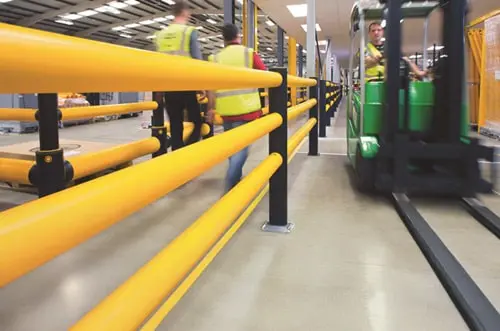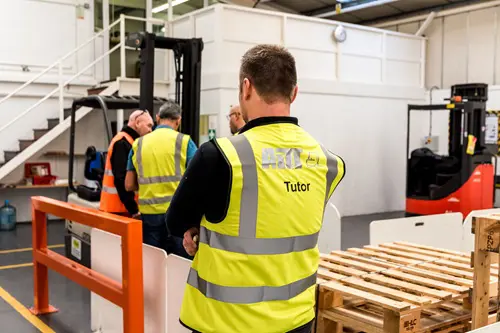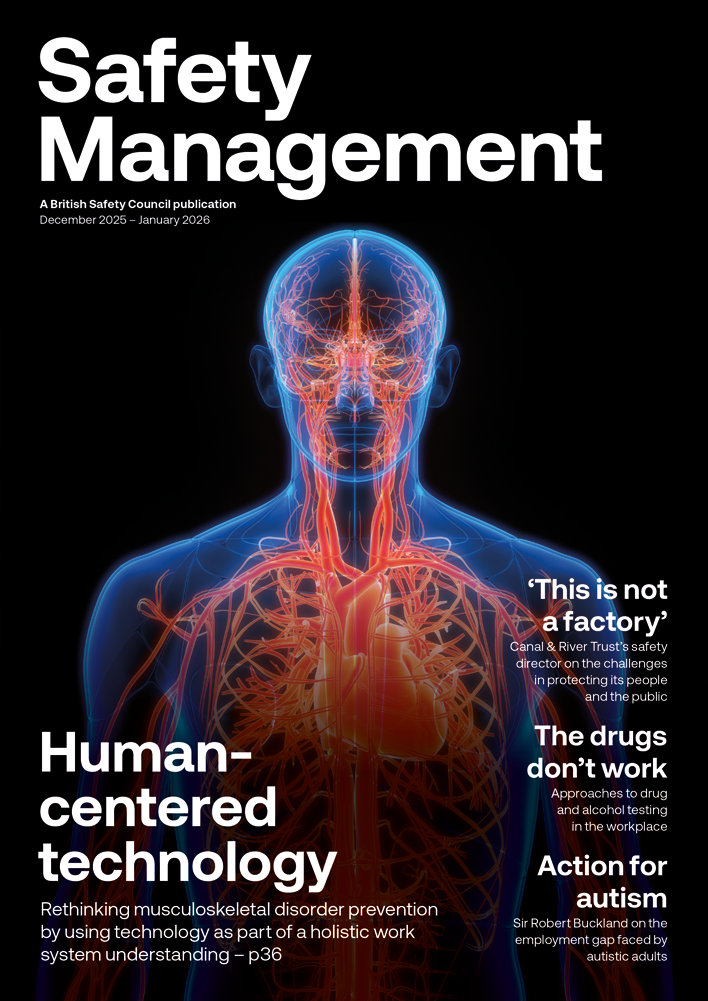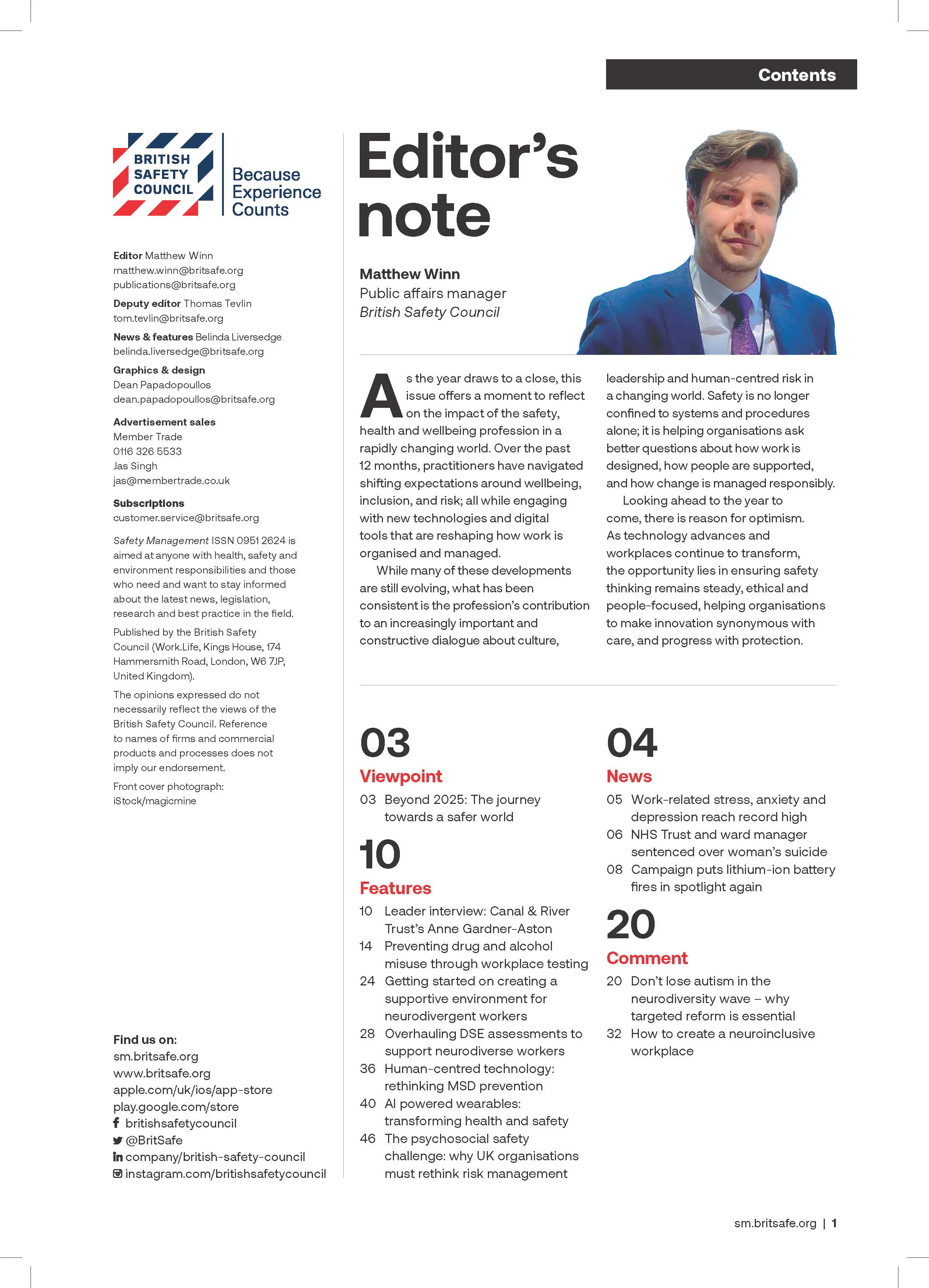From 4 July, the use of fire extinguishers and suppression systems containing the ‘forever chemical’ perfluorooctanoic acid (PFOA) will be prohibited, meaning duty holders need to move fast to ensure compliance with the law.
Features
The C8 foam ban explained: what it means for you
As of 4 July 2025, all firefighting foams with the C8 chemical composition will be banned.
It’s a short statement, but what does that mean?
Perhaps more importantly, what does that mean for you?
C8 firefighting foams, specifically aqueous film-forming foams (more commonly referred to as AFFF), are used in the kind of fire extinguishers that suppress flammable liquid fires (or Class B fires). However, these foams have been proven to be detrimental to human and animal health, as well as the wider environment, so over the past decade, they have slowly but surely been phased out by extinguisher manufacturers in favour of the less harmful C6 firefighting foams.
 Since 4 July, all firefighting foams with the C8 chemical composition are banned. Photograph: iStock
Since 4 July, all firefighting foams with the C8 chemical composition are banned. Photograph: iStock
Now, as the ban on AFFF fire extinguishers takes effect, people are understandably confused by what they can and cannot use, and what the ban means for them. There may be an AFFF extinguisher in the corner of the workplace – can it be used? Does it need to be replaced immediately?
That’s what I’m going to explain in this article.
Explaining the ban on AFFF
Let’s start from the beginning. AFFF fire extinguishers are tested and proven suppressants against fires, but they contain a harmful chemical group called PFOA (perfluorooctanoic acid). Many of us have been using products containing these chemicals throughout our daily lives, without even realising it. You may have even used something today.
PFOA is used in firefighting foams, as mentioned already, but is also present in non-stick cookware and stain-resistant fabrics. As of 4 July, PFOA-based firefighting foams will be banned in an attempt to bring legislation into line with the existing ban on PFOS (perfluorooctane sulfonate) chemicals, which was introduced in 2011 due to environmental concerns.
Sound familiar?
As part of a wider group of chemicals known as ‘forever chemicals’ because of how difficult they are to break down in the environment, PFOA is the latest to be officially banned, with further consultations still taking place regarding bans on additional chemicals from the PFAS (per- and poly fluoroalkyl substances, or ‘forever chemicals’) group.
From July 2025, the use of firefighting foams containing PFOA and C8 chemicals will be banned in the UK under REACH Regulations. It’s a pivotal moment in the fire safety sector, and one that will not only change how we tackle certain fire risks but also signal a wider cultural shift in safety, sustainability and accountability.
So, what’s changing?
Put in the simplest terms, any AFFF extinguisher that is more than 10 years old is highly likely to need to be replaced. Admittedly, replacing any extinguisher after 10 years is highly recommended, regardless of this ban, but most manufacturers stopped using the banned chemicals around 2016, so existing foam extinguishers can still be used if they use the safer C6 chemical composition in their firefighting foams.
PFOA and other C8 compounds have long been used in aqueous film-forming foams (AFFFs) because of their effectiveness in extinguishing liquid fuel fires. But these so-called ‘forever chemicals’ don’t degrade in the environment, and their potential links to serious health risks, from cancer to developmental effects, have placed them under increasing scrutiny.
 Any AFFF extinguisher that is more than 10 years old is highly likely to need to be replaced. Photograph: iStock
Any AFFF extinguisher that is more than 10 years old is highly likely to need to be replaced. Photograph: iStock
With REACH regulatory restrictions tightening, July 2025 marks the end of PFOA-based foam usage in most firefighting applications and, in the meantime, we await an outcome from ongoing conversations between DEFRA (the UK’s Department for Environment, Food & Rural Affairs) and the Health and Safety Executive (HSE) regarding a full ban on fluorinated foams. However, any additional ban on other fluorinated foams used in fire extinguishers is unlikely to be enforced before 2030 to allow manufacturers time to research, develop, test and launch alternative solutions.
The ban on PFOA-based firefighting foams is more than just a technical adjustment for manufacturers or fire services. It’s a wake-up call for every professional involved in specifying, supplying or servicing foam fire suppression systems, including duty holders responsible for fire safety in buildings and locations where PFOA-based AFFF fire extinguishers are present.
What does it all mean for duty holders?
At the time of writing, just before the ban comes into force, there is no legal restriction on the supply of or refilling of C6-based AFFF in fire extinguishers. However, many manufacturers are moving ahead of the legislation and the use of C6-based extinguishers is already being phased out in a similar way to how C8-based foams were a decade ago.
Ultimately, the use of PFOA-based AFFF fire extinguishers and suppression systems will be illegal when the ban comes into force, and there will be penalties for those who do not comply (i.e. those who continue to use banned foams). Put simply, if your extinguisher or suppression system contains PFOA, it will be deemed illegal.
So, how can a duty holder work out if their organisation is affected by the ban? Well, the first (and best) thing to do at this stage is to research your existing fire safety set-up and assess whether or not the current foam extinguisher(s) will need to be replaced.
The graphic below, taken from the PFAS white paper available as part of our Firechief® Academy webinar series, lays out a good rule of thumb for anyone who is unsure of the current regulations and what they mean.

If your existing foam extinguisher falls into the red category, then it will need to be replaced, but if it falls into the green category, then you’re okay.
So, does this mean duty holders need to go to their nearest foam extinguisher, remove it from the stand and throw it in the bin? No, providing it does not contain PFOA. However, even if it does NOT contain PFOA, if it’s more than a decade old, it must be replaced at the earliest opportunity, as it has now exceeded its lifespan.
If the red category applies, where an extinguisher will have to be withdrawn, it must be disposed of correctly. Due to the ban, this means engaging an accredited and licensed hazardous waste disposal company who will collect any banned extinguishers and dispose of them correctly and legally. The process involves incinerating the extinguishers at a very high temperature to fully break down the chemical construction of the foam and therefore prevent any kind of environmental contamination.
What are the alternatives to AFFF extinguishers?
Fortunately, thanks to the proactive decision to move away from C8-based foams over the last 10 years, there are already a lot of very good alternatives to AFFF extinguishers, which are not just in development, but readily available to purchase. For instance, at Firechief® Global, we decided to futureproof our foam extinguisher range and began researching, developing and testing our PFAS-free range around two years ago.
Today, all our foam-based products are PFOA-free, tested and accredited to deliver the same industry-leading performance you expect. In addition to this, we have recently added a PFAS-free range, which is free of the C6 chemistry as well. Known as our PureSafe range, these products offer a safer, more environmentally friendly alternative to AFFF without compromising on performance.
As far as options go, duty holders have two alternatives if they’re looking to replace their existing extinguishers or suppression systems in a futureproof way. These are:
- Fluorine-free foam (FFF). Suited to Class A (solid combustibles) and Class B (flammable liquids) fires, the composition of these foam extinguishers has been altered to offer a safer option for users and the environment.
- Watermist. Suitable for Class A fires, watermist represents a cleaner alternative in every sense and is particularly effective in ‘drier’ areas where controlling the temperature of the fire and minimising the risk of the fire spreading are key.
What should duty holders be doing NOW?
Due to the enforcement of the ban being so close, the disposal of legacy PFOA stock, procurement of compliant alternatives and retraining on new foam firefighting systems and technologies should already be in motion. This isn’t just regulatory housekeeping; it’s a matter of legal liability and environmental duty.
If you haven’t started the process, it is by no means too late, but you will need to act quickly in order to remain compliant. To do this, there are four steps you need to follow:
- Audit your existing stock. Check every fire extinguisher or suppression system on the premises, or in your stock range. Identify any that contain PFOA or C8 chemicals and either make a note of them or separate them from your compliant stock.
- Arrange disposal. The safe, compliant disposal of banned extinguishers and systems is key, as improper handling or disposal can result in penalties.
- Research and identify alternatives. Earlier, we highlighted some of the available options (fluorine-free foam and watermist), and duty holders will need to make an informed decision on which type and size of extinguisher best suits their requirements.
- Train the team and implement them. Finally, once you’ve identified your solutions, train the team on the reasons behind the changes, why you have chosen the alternative and how to install and/or use them.
Looking further ahead
With the ongoing talks about PFAS, this isn’t the last environmental regulation likely to affect firefighting foams, and that’s a good thing, rather than a challenge.
Sustainability and fire safety are increasingly working hand-in-hand, rather than being on opposing teams, and the successful fire safety products and professionals are going to be those that embrace the changes and learn how to deliver sustainable fire safety.
Whenever the full ban on PFAS comes in, and it is a case of when rather than if, we all need to be ready to embrace it.
At Firechief® Global we have taken the opportunity to introduce a range of PFAS-free and C6-free extinguishers as part of our journey towards Net Zero. We believe that ongoing developments and testing will enable us to remain at the forefront of the fire safety industry by making the world a safer place, free from the fear of fire and environmental and health challenges.
To register for a free webinar and white paper about the ban on the use of firefighting foams containing PFOA, go to:
firechiefglobal.com
linkedin.com/company/firechiefglobal.com/
E. [email protected]
T. +44 (0)330 999 0019
Laurie Pollard is managing director at Firechief® Global
FEATURES

Underpinning safety training with neuroscience for long lasting impact
By SSE Active Training Team (ATT) on 30 November 2025
A behavioural safety training programme developed by Active Training Team for energy provider SSE has been carefully designed with neuroscientific principles in mind – resulting in a prestigious industry award for Best Training Initiative in 2024.

Why a painted line will never be enough
By UK Material Handling Association (UKMHA) on 20 November 2025
Businesses that operate material handling equipment like forklifts are being urged to submit accident and near miss details to a new confidential reporting portal so the industry can identify what needs to be done to improve safety standards.

Why workplace transport training is changing in 2026 and what it means for employers
By AITT on 26 November 2025
New workplace transport training categories due in January mean it is essential to ensure operators of material handling equipment have the necessary training for the exact type of machine they use, and accredited training providers are an ideal source of advice and conversion training.



